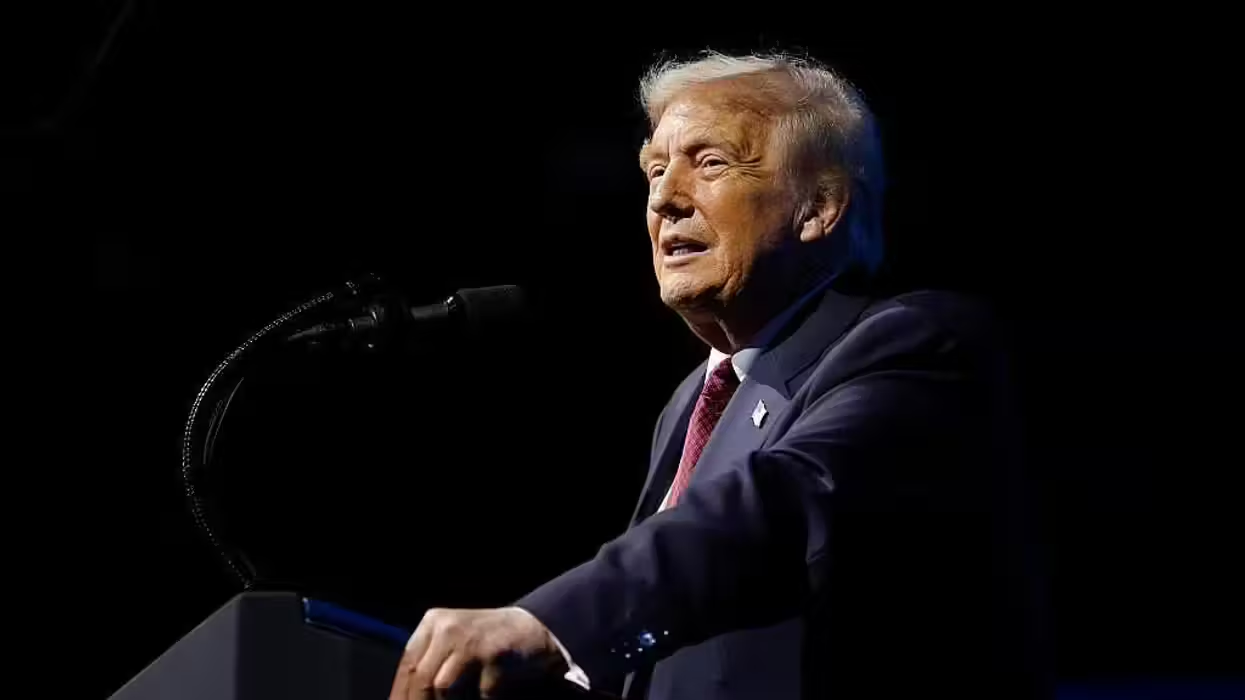
© 2025 Blaze Media LLC. All rights reserved.
"...there are fears that Lolong may not be alone."

MANILA, Philippines (AP) — Last September, the Blaze reported a town in the Philippines celebrating the capture of an enormous crocodile that was suspected to have made some deadly attacks upon villagers. Keeping the croc alive but captive, the villagers used it to help generate tourism.
Although having the croc on display has already been a boon for the town, they now have something else to brag about besides just landing it. Lolong, as he is called, has been confirmed by the Guinness World Records as the largest saltwater crocodile in captivity in the world.
(Related: Load of croc: Picture captures giant crocodile leaping by tourist's boat)
Lolong has become the star attraction of a new ecotourism park and research center in the outskirts of Bunawan and has drawn thousands of tourists since news of its capture spread. Elorde said his town has earned 3 million pesos ($72,000) from the modest entrance fees at the park, with most of the money being used to feed and care for the crocodile and maintain the park.
Lolong measures 20.24 feet (6.17 meters) and weighs more than a ton, Guinness spokeswoman Anne-Lise Rouse said in a statement seen Sunday. The reptile took the top spot from an Australian crocodile that measured more than 17 feet (5 meters) and weighed nearly a ton.
The news sparked celebrations in Bunawan, a farming town of 37,000 in Agusan del Sur province, but Mayor Edwin Cox Elorde said it also fostered concerns that more giant crocodiles might lurk in a marshland and creek where villagers fish.
Watch this AP footage from last year when Lolong was first captured:
"There were mixed feelings," Elorde said by telephone. "We're really proud because it proves the rich biodiversity of our place but at the same time, there are fears that Lolong may not be alone."
Environment and Natural Resources Secretary Ramon Paje welcomed the Guinness announcement and the growing attention for the crocodile, saying it would help people realize the biodiversity of their surroundings and the need to protect it. He said he would recommend that the government help Bunawan become an ecotourism destination.
The crocodile was captured with steel cable traps during a three-week hunt after a child was killed in 2009 and a fisherman went missing. Water buffalos have also been attacked by crocodiles in the area.
About 100 people led by Elorde pulled the crocodile from a creek using a rope and then hoisted it by crane onto a truck. It was named after a government environmental officer who died from a heart attack after traveling to Bunawan to help capture the beast, Elorde said.
Elorde said he saw a bigger crocodile escape when Lolong was captured and villagers remain wary of fishing there at night. He said he has formed a team of hunters and is seeking government permission to hunt that crocodile.
Want to leave a tip?
We answer to you. Help keep our content free of advertisers and big tech censorship by leaving a tip today.
Want to join the conversation?
Already a subscriber?
more stories
Sign up for the Blaze newsletter
By signing up, you agree to our Privacy Policy and Terms of Use, and agree to receive content that may sometimes include advertisements. You may opt out at any time.
Related Content
© 2025 Blaze Media LLC. All rights reserved.
Get the stories that matter most delivered directly to your inbox.
By signing up, you agree to our Privacy Policy and Terms of Use, and agree to receive content that may sometimes include advertisements. You may opt out at any time.





